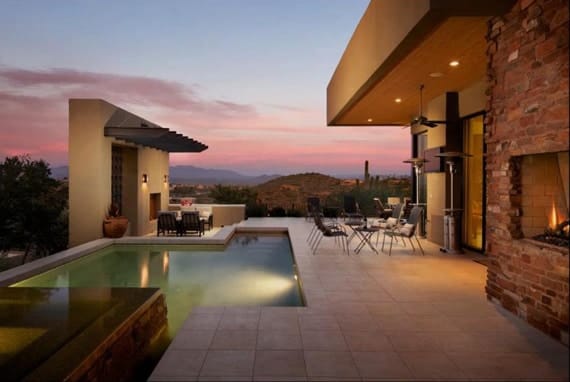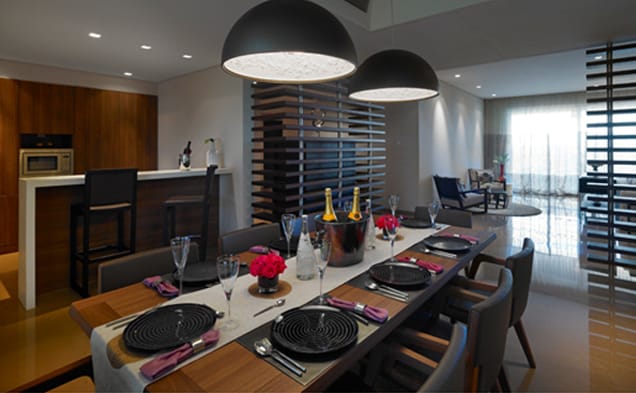Real estate photography or also known as architectural photography is an important part of the commercial photography niche. Those operating in the real estate photography business are aware of how challenging and attractive this job is. If you have just began or consider beginning to work in the field, here are some useful tips and information to help you keep up with clients’ demands.
What is Real Estate Photography?
To put it simple, real estate photography reduces to images showcasing properties for sale. This doesn’t mean that this type of photography is less creative than others. It is true that real estate photography limits your artistic freedom and it is driven by marketing purposes more than any other niche. What is the advantage than of pursuing a career in this sector?
Is real estate photography profitable? As in the US today, real estate is one of the most competitive industries, we can clearly say that yes, now is a good time to start a business in this area. Even if you love performing in other areas as a freelance photographer, real estate photography can be a great opportunity not only to earn some extra cash, but also to improve and diversify your skills.
Basic Equipment Needed
What you need to get started is a digital camera, lenses, tripod, and a computer which will allow you managing the post-processing phase.
- Camera and Lenses
Real estate photography is a competitive area for professionals like you. That is why a good DSLR is your best bet. Choose one with high ISO performance for indoors shooting, and the possibility of using off-camera flash.
As regards the type of lenses you should use, wide angle lenses and tilt-shift lenses are a must for this type of photography.
While wide angle lenses are meant to help you shoot narrow spaces like bathrooms, tilt-shift lenses increase the depth of filed and enable sharper, high quality images taken outdoors. Tilt-shits lenses are required when shooting wider spaces, mainly correcting converging verticals.
The only thing you need to be super careful with is not to distort images by getting too enthusiastic with the use of lenses.
- Tripod
Tripods are the key to a professional outcome, among others. We advise you to choose a sturdy duty one used for studio purposes. If you are at the start of your career and wonder what type of tripod would fit your needs best, check our post on top considerations when buying one.
- Photo Editing Software
Not all images will turn out the way you or the client want. That is why a good knowledge of either Adobe Lightroom or Photoshop can save your life.
The Importance and Specificity of Lighting
It is never enough to emphasise the importance of lighting in photography. Needless to say that natural light sources are desirable in comparison to artificial lighting techniques. Let’s have a look at what you need to keep in mind depending on whether you shoot outdoors or indoors.
- Exterior Real Estate Photography
Once you have been contracted for a real estate photo job, first thing to do is check the weather forecast. Also, planning is really important prior to the photo shooting. Ensure you are there early in the morning, take the equipment you need and get ready to spend a few hours working. Leave some time for post-processing too.
While on the scene, avoid shooting in the sun and search the angles that enable a broader perspective over the property. If there’s a yard, patio or garden, take advantage and capture a wider area.

Great exterior images also benefit from an overcast sky. Don’t forget to take it into account.
- Interior Real Estate Photography
First thing to consider is profiting from window light. Apart from that, you will need to work with interior light sources and even turn to supplemental light for dark corners.

Using flash is common for real estate photography as the time of shooting is too short for mastering sophisticated lighting techniques. In this case, be careful with the exposure of the image. Using a flash requires adjusting camera settings, like ISO, shutter speed and aperture. We have already discussed about ISO settings in low light conditions. Have a look at our post on ISO and learn more about how to capture high quality interior images.
The Advantages and Disadvantages of Post-Processing in Real Estate Photography
Editing tools such as post-processing software are essential in improving images of the property you were assigned to shoot.
The main advantage of post-processing real estate photos is pricing. Special editing will result in some extra cash for you as edited photos are charged more as compared to unprocessed ones.
However, real estate agencies demand accurate images. The key to a successful real estate photo editing process is thus making properties look amazing without distorting reality.
Real Estate Photo Format and Aspect Ratio
If you are new to real estate photography, inform about the marketing media format and aspect ratio preferred by real estate clients and use your equipment and tools accordingly.
Normally, each real estate agency decides on what photo dimensions and format are required for their websites. As a tip, try to get familiar with MLS sites and requirements in your area. These sites usually process and send images to regional and national real estate sites.
If you found this post useful or have any questions and suggestions, don’t hesitate to drop us a line.








